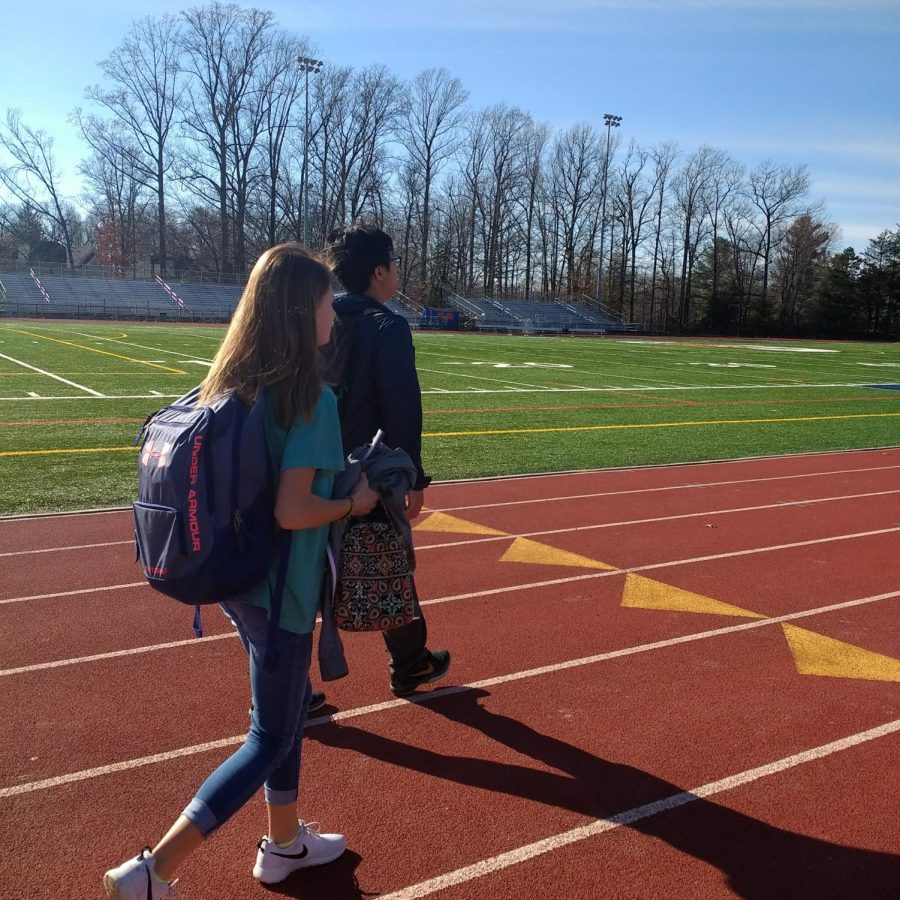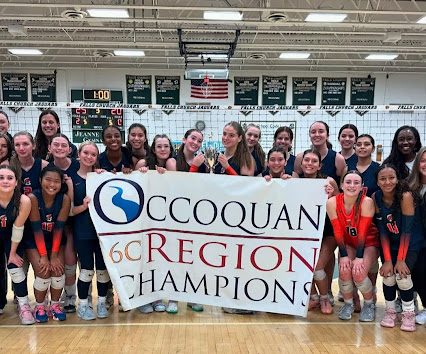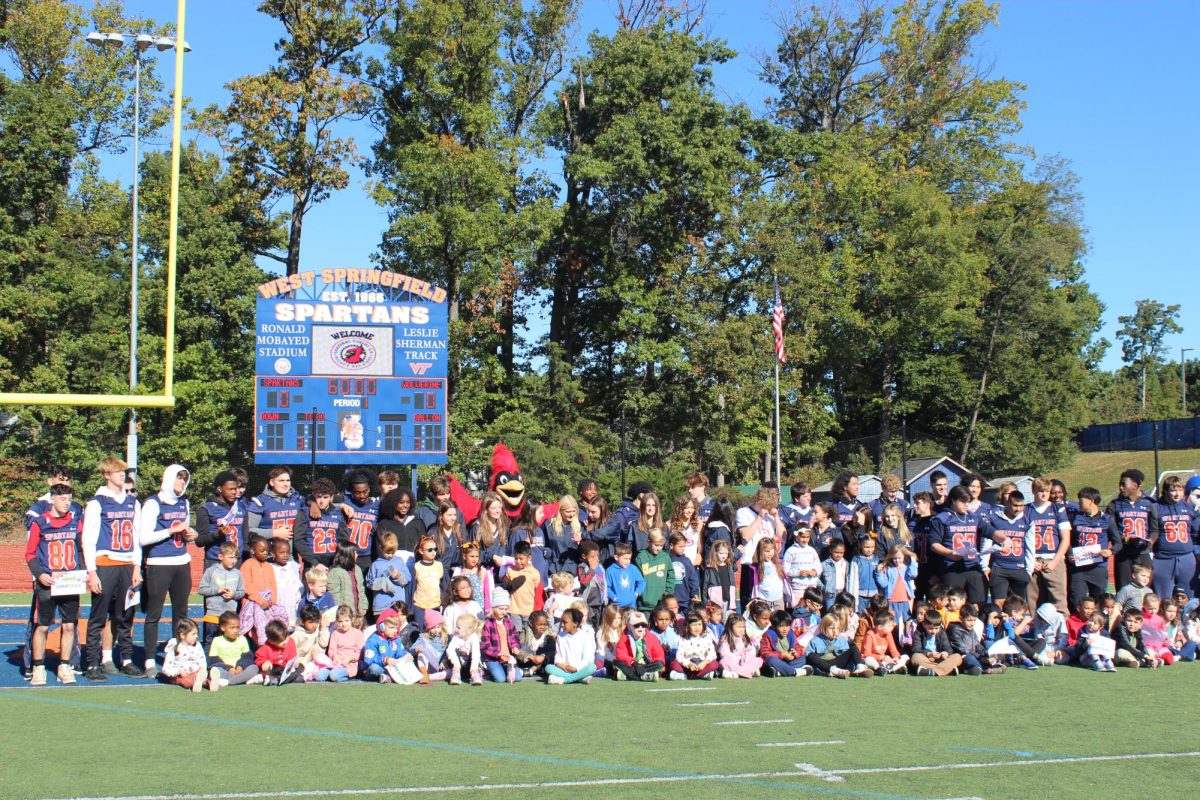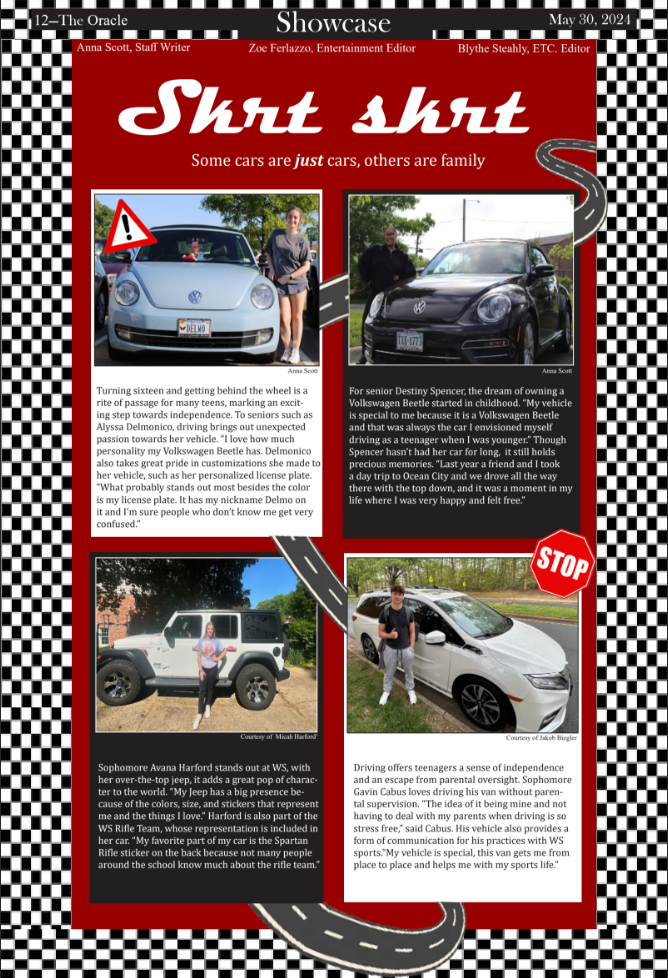How safe is our turf?
Editorial
Photo courtesy of Helen Heaton
Students walk across the field in order to get to class. New studies have raised questions regarding the safety of these fields.
March 13, 2018
It ends up everywhere: inside shoes, between folds of clothing, and sprinkled across the bathroom floor. Athletes spend hours on it every day, while PE students sit on it and run their fingers through it.
It contains arsenic, mercury, and lead.
“It,” of course, is artificial turf—or, more specifically, “tire crumb,” those familiar black rubber pellets made from recycled tires and trace amounts of carcinogenic chemicals.
In Maryland, there has been a proposal to ban state funding for the installation of these fields, which prompts us to question Fairfax County’s broad use of them.
This is because, as previously mentioned, tire crumb often contains extremely dangerous chemicals. While these are generally present in very low quantities, the only comprehensive study into tire crumb’s safety is currently being performed by the Environmental Protection Agency (EPA) and won’t be finished until later this year. That may sound like good news—until you realize that for years our schools have been using, and continue to use, this controversial material without knowing for certain that it is safe.
The EPA says it best in the background portion of its study’s action plan: “Limited studies have not shown an elevated health risk from playing on fields with tire crumb, but the existing studies do not comprehensively evaluate the concerns about health risks from exposure to tire crumb.”
In other words, so far so good—so far.
There are other problems with artificial turf, as well. Toronto Public Health conducted a health impact assessment on artificial turf and found that it could become almost 100 degrees Fahrenheit hotter than natural grass in the same conditions. This is both uncomfortable for athletes and dangerous, as higher temperatures allow for the release of more chemicals. Furthermore, a New York State Department of Health fact sheet stated that on a sunny 98 degree day, an artificial turf field was recorded at 178 degrees. In Northern Virginia, 98 degrees would be unusually hot—but not unprecedented, so it is likely that our turf fields can also approach 180 degrees.
There are admittedly potential benefits to artificial turf. As it doesn’t require harmful fertilizers, herbicides, and pesticides, some view it as more environmentally friendly than natural grass. The lack of required upkeep has another upside: artificial turf is far cheaper to maintain than real grass. However, turf fields are not truly environmentally friendly; they sometimes require applications of germ-killing chemicals, they aren’t biodegradable, and they don’t absorb carbon dioxide as natural grass fields do. From a financial perspective, artificial turf is far more expensive to install than real grass and must be replaced every eight to ten years.
Overall, artificial turf at best is somewhat shady, and at worst is a threat to our health. We are not trying to make dramatic claims and cause hysteria, but we are asking the school and FCPS to look carefully at whether artificial turf is truly the best course of action. Many of us spend hours around this substance every week, and while we would be delighted to discover that it’s perfectly safe, we don’t currently know that to be the case.
Our current field is relatively new, so we are likely to have it for a while. For Spartans who are now concerned about artificial turf, don’t panic (remember, there have been many small studies suggesting it could be perfectly safe)—but do follow the advice recommended by almost every article we read to research this issue: shake off tire crumb before entering your house, and always wash your hands.





